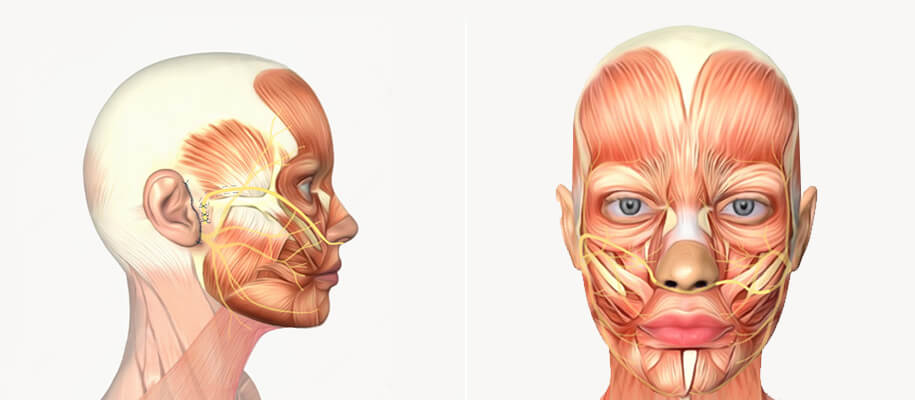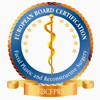Cross Facial Nerve Graft (CFNG) is an advanced surgical technique used in the treatment of facial paralysis due to facial nerve damage. In this method, signals received from healthy facial nerves are directed to the paralyzed area, allowing the muscles to regain function. In this context, the patient regains facial movements flawlessly. If you want to learn more about this miraculous facial paralysis method, you can take a look at our content. Thus, you can have detailed information about cross facial nerve graft. We wish you all good health and good days.
What is a Cross-Facial Nerve Graft?
Cross Facial Nerve Graft (CFNG) is an advanced surgical technique used in the treatment of facial paralysis, aiming to restore the function of the facial nerves. In this technique, electrical signals taken from an intact facial nerve are transmitted to the muscles on the paralyzed face side. In this way, nerve tissues such as the sural nerve taken from the legs serve as a bridge. As a result, As a cross-face graft, paralyzed facial muscles are re-stimulated and facial movements are restored. The operation is usually performed in a two-stage process. In the first stage, the nerve graft is placed in a way that it will carry the nerve signals received by the healthy face. In the second stage, these nerve connections are used to reactivate the paralyzed muscles. After the procedure, individuals who have long-term facial paralysis and who have not benefited from other treatment methods can achieve very effective results. experience.

How is Cross Facial Nerve Graft Procedure Done?
If the patient is a suitable candidate for CFNG, the surgery is performed in 2 stages. The nerve is taken from the patient's legs under general anesthesia. For this, an incision is made first on the back of the lower leg. However, 2 or 3 incisions may be made to prevent problems during the transplant. After a sufficient amount of cross facial nerve graft is taken after the incisions, the nerve is transferred to the face.
When transplanting grafts to the face, a correct incision is made in the front of the ears and incisions are made in the inner lips and nostrils for the passage between the grafts. In this way, the healthy side is connected to the paralyzed side in a crosswise manner. Afterwards, the incisions are stitched and small tapes are applied to both sides of the face. In this way, the procedure is completed flawlessly.
Which Nerves Are Used For a Cross Facial Nerve Graft?
Certain nerves are selected for the cross facial nerve graft surgery to be applied to the patient. At this point, the nerve that generally increases the success of the surgery and is frequently used is the sural nerves on the back of the leg. The reason for choosing this nerve is that it does not affect the person's walking and motor skills. However, since it is a sensory nerve, there is a loss of sensation in a small area on the back of the leg, but considering the benefits it provides, this complication is insignificant and the loss of sensation decreases over time as other nerves repair this part.
How Can I Prepare For a Cross Facial Nerve Graft Operation?
You need to get a report or permission before the cross facial nerve grafts surgery. After the 8-hour operation, approximately 2 weeks is a reasonable period of time for permission. However, if you work in heavy and tiring jobs, you can extend this period even further.
If you plan to do heavy and tiring activities, you should wait 4 to 6 weeks. You should also quit smoking and pay attention to your diet before the surgery. If you pay attention to these, the cross-facial nerve graft recovery phase will also be short.
Can A Cross Facial Nerve Graft Be Performed In a Patient Of Any Age?
The changes that muscles show with age also lead to the questioning of the reliability of facial revitalization techniques. At this point, the use of cross-facial nerve grafts in children is more reliable. The reason for this is that the number of axons in the facial nerves of children has not decreased and the number of axons in the cross-facial graft decreases with age. Therefore, cross-facial nerve graft surgery should be supported with other treatments in older ages. Considering the patient's age and axon count, it is possible to use it in the elderly who are suitable for the surgery profile. Due to the high success rate, youngThis method is used more in children and adults.
What Should I Expect After a CFNG Surgery?
The patient can be discharged the same day after cross facial nerve graft surgery. In addition, the area where the nerves are taken from the leg will not affect walking and dressing is sufficient. In addition, it would be a good idea to keep the leg slightly elevated while sitting or lying down to be comfortable after the surgery.
In this context, the doctor gives an appointment for 1 or 2 weeks later depending on the patient's condition and removes the ear tapes at the control appointment. In this way, the dressings on the leg are removed after 2 or 3 weeks, helping the patient return to normal life.
Cross Face Nerve Graft Recovery
The recovery process after Cross Face Nerve Graft (CFNG) surgery may vary depending on the individual's general health status, nerve regeneration rate and the surgical techniques applied. However, it usually takes 6 to 12 months for the nerves to regrow through the graft and reach the target muscles. During this time, the nerves are intended to transmit electrical impulses from the healthy side to the paralyzed facial muscles. During this time, it is expected that the swelling and sensitivity will decrease after the surgery in the first few weeks. However, it may take a longer time for the nerves to regain full function. Therefore, during this period, patients should do regular physical therapy and facial exercises. These exercises are critical in retraining the muscles and ensuring that they respond correctly to nerve signals. At the same time, regular follow-up examinations are performed throughout the healing process to facilitate the transmission of nerve signals to the target muscles and to support the formation of symmetrical facial expressions. In this way, in addition to physical recovery, patients can also achieve significant psychological improvements in self-confidence and social interaction skills.
Things To Consider Before Cross Facial Nerve Graft
Before cross facial nerve graft surgery, the patient's attention to the instructions will ensure the success of the surgery and accelerate the healing process. Therefore, the following should be considered before facial nerve graft surgery;
- Since the procedure will be performed under general anesthesia, the patient should be open for 6 hours before the surgery. It is recommended to prepare for the surgery by staying in the hospital.
- Water consumption should be stopped for up to 2 hours before the surgery.
- If the patient is a male, hair should be shaved for smooth skin. and the beard should be shaved.
- Blood thinning medications should be stopped before the surgery.
- The doctor should be informed about regularly used medications.
- Herbal tea and food supplement consumption should be stopped for a while.
- Alcohol and cigarettes should be avoided for 1 week or 15 days before the surgery.
Things To Consider After Cross Facial Nerve Graft
Things to Consider After Cross Facial Nerve Graft Surgery are as important as things to consider before the surgery. Therefore, things to consider after Cross Facial Nerve Graft are as follows;
- Bleeding may occur in the form of leakage behind the ear after the surgery. This is natural and should not be feared.
- The ear and face should be protected from pressure.
- You should lie on your back with your head elevated for about a week.
- Since swelling and bruising will be seen in the first 48 hours, cold compresses should be applied.
- Be careful as the swelling will make it difficult to eat and use your muscles for a while.
- Strong and heavy activities should be avoided for up to 6 weeks.
- You should avoid baths or hot showers for the first 3 days.
- Light and watery foods can be consumed for the incision in your mouth to heal. Foods should not be too hot or too cold.
- To prevent food from accumulating around the incision in the mouth, gargle with water.
- To prevent bleeding from the incision in the nose, blowing your nose is prohibited.
- The incision and stitches should not be tampered with.
- A healthy eating routine should be continued for 15 days.
- Smoking and alcohol consumption should be avoided for at least 1 month.
Who Are Candidates ForCross Facial Nerve Graft Operation?
Patients with facial paralysis who apply within the first 3 months will achieve successful results from the surgery. Even if cross facial nerve graft transplantation is performed after 3 months,The desired result may not be obtained. For this reason, some patients do not show any growth in the nerves after 3 months. In this context, the patients who are suitable for facial nerve graft are as follows;
- Cases in which the face of patients with established facial paralysis can be reanimated
- Cases in which facial nerve injuries allow muscle activity in the paralyzed part to continue
- Situations in which muscle power will be given to patients with sufficient muscle activity
Another important detail in determining the appropriate candidate is age. In young people and children, the growth of grafts is short-lived and better results are obtained from surgery. In older patients, the grafts do not grow and do not give the desired results. Therefore, if the intervention is performed within 3 months in young people and children, better results are obtained from surgery.
How Long Does It Take For a Cross Facial Nerve Graft To Grow?
The length of the transplanted nerve also affects the growth rate of cross-facial nerve grafts. The length of the nerve depends on the purpose for which it is transplanted and the growth rate changes accordingly. The average cross-facial nerve graft growth takes 6 months to 1 year. However, growth is observed after the transplanted nerves adapt to the area. In this context, the success of the doctor, the age of the patient, the number of growing nerve fibers are also closely related to the growth rate. In addition, it should not be forgotten that cross-facial nerve grafts have a shorter growth period in children and adolescents.
Cross Facial Nerve Graft For Facial Paralysis Cost
The cost of Cross Facial Nerve Graft (CFNG) surgery can vary depending on many factors. For this reason, the hospital or clinic where the surgery will be performed, the experience of the surgeon, the advanced level of equipment and techniques used, etc. have a direct effect on the cost. In addition, the complexity of the surgery, the need for additional surgical interventions, whether it is heard or not and the implementation of a personalized treatment plan depending on the patient's specific condition also plays an important role in determining the cost. However, if you want to get detailed Cross Facial Nerve Graft For Facial Paralysis Cost information, you can contact your doctor.
FAQ
How soon can ı see results after a cross facial nerve graft?
After cross facial nerve graft recovery, facial muscles are expected to grow. The cross facial nerve graft added to the patient grows at different times depending on the patient's age. As growth occurs, it shows itself on the face. The results of a cross facial nerve graft can be seen in approximately 6 to 12 months.
Is a cross facial nerve graft a permanent solution for facial paralysis?
The permanence of the procedure is also affected by whether the patient is a suitable candidate for the surgery. Cross facial nerve graft surgery offers a permanent solution for people who the doctor categorizes as suitable candidates. The muscles and nerves will move as the grafts grow.
Will I feel any pain or discomfort?
It is normal to feel pain or discomfort after surgery. Most of the discomfort disappears within 72 hours of surgery. It is normal to feel pain around the wounds. You will not feel any pain or ache while cross facial nerve graft recovery is taking place. When there is pain in the wounds, painkillers prescribed by the doctor can be used.
Can a cross facial nerve graft be performed on patients of all ages?
The suitability of the patient is sought for cross facial nerve graft transplantation. It is mostly preferred in children and young people. Since the number of axons decreases in the elderly, the success of the surgery is questionable. Your doctor will give the most accurate information on this subject after consultation.














